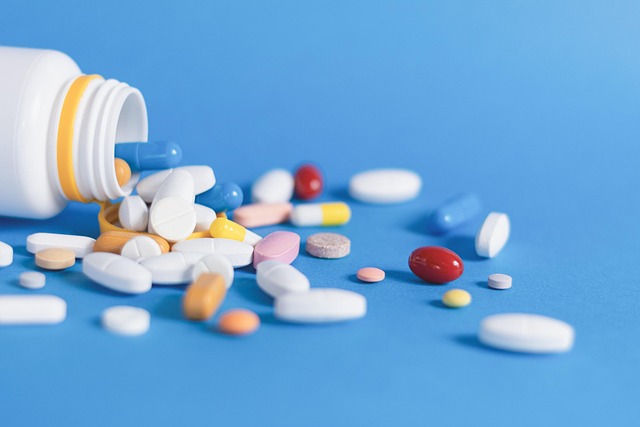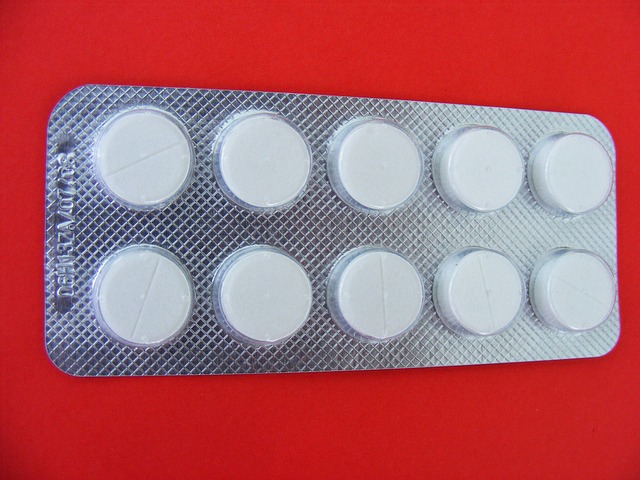GLP-1 receptor agonists (GLP-1 drugs) are cutting-edge medications transforming type 2 diabetes management by mimicking gut hormone GLP-1. They achieve dual benefits: regulating blood sugar and promoting weight loss. These drugs reduce HbA1c levels, stimulate insulin secretion, suppress glucagon release, slow gastric emptying, and enhance satiety. Beyond glycemic control, they decrease cardiovascular risk, improve left ventricular function, and lower inflammation. GLP-1 drugs are valuable for managing both metabolic health and diabetes complications. However, patient compliance requires careful consideration of side effects like nausea, vomiting, and diarrhea, necessitating strategic interventions from healthcare providers. Future research aims to enhance their effectiveness, safety, and accessibility through new formulations and combination therapies.
GLP-1 receptor agonists, a class of drugs designed to mimic the effects of the gut hormone GLP-1, have emerged as powerful tools in diabetes management. This article delves into the clinical outcomes associated with these innovative GLP-1 drugs, exploring their mechanism of action and diverse therapeutic benefits. From improving glycemic control to offering cardiovascular advantages and aiding weight loss, these agonists are transforming diabetes care. We also examine their safety profile, patient compliance, potential in combination therapies, and future developments in GLP-1 drug innovations.
Understanding GLP-1 Receptor Agonists: Mechanism of Action

GLP-1 receptor agonists, among the latest types of medication in the management of diabetes, have gained significant attention for their dual role in regulating blood sugar levels and promoting weight loss. These drugs mimic the actions of glucagon-like peptide-1 (GLP-1), a hormone naturally produced in the gut in response to food intake. By binding to GLP-1 receptors, these agonists stimulate insulin secretion when blood glucose is high, helping to lower blood sugar levels. This mechanism is particularly beneficial for individuals with type 2 diabetes who often struggle to maintain optimal blood sugar control through lifestyle changes alone.
Moreover, beyond their impact on glycemic control, GLP-1 drugs have been shown to slow gastric emptying, leading to feelings of fullness and reduced appetite, which contributes to weight loss. This multifaceted approach makes GLP-1 receptor agonists a promising game-changer in diabetes management, offering not only improved blood sugar regulation but also potential benefits for long-term metabolic health and overall well-being.
Clinical Efficacy in Type 2 Diabetes Management

GLP-1 receptor agonists, a class of drugs designed to mimic the effects of the natural hormone GLP-1, have shown significant clinical efficacy in the management of Type 2 diabetes. These drugs work by stimulating insulin secretion in a glucose-dependent manner, helping to lower blood sugar levels. Additionally, they suppress glucagon release, which reduces liver glucose production. This dual action results in improved glycemic control, making GLP-1 drugs a valuable tool for treating this chronic condition.
Studies have consistently demonstrated that GLP-1 receptor agonists lead to substantial reductions in HbA1c levels, a key marker of long-term blood sugar control. They also offer benefits beyond glycemic control, including weight loss and reduced cardiovascular risk. This multi-faceted approach makes these drugs an attractive option for healthcare providers looking to manage Type 2 diabetes holistically.
Impact on Glycemic Control and Insulin Sensitivity

GLP-1 receptor agonists, a class of drugs designed to mimic the effects of the gut hormone GLP-1, have shown remarkable benefits in terms of glycemic control. These medications stimulate insulin secretion in a glucose-dependent manner, enhancing insulin sensitivity and promoting glucose uptake by peripheral tissues. This action is particularly beneficial for individuals with type 2 diabetes, as it helps reduce blood sugar levels effectively while minimizing the risk of hypoglycemia, a common concern with other antidiabetic agents.
The impact on insulin sensitivity goes beyond blood sugar regulation. GLP-1 drugs have been found to improve overall metabolic health by reducing body weight and decreasing inflammation. This dual effect not only enhances glycemic control but also contributes to a lower risk of cardiovascular diseases, a common complication associated with long-term diabetes management.
Cardiovascular Benefits: Recent Research Insights

Recent research has shed light on the cardiovascular benefits associated with GLP-1 receptor agonists, a class of drugs that have gained significant attention in diabetes management. These beneficial effects extend beyond their primary role in glucose control, highlighting the potential of GLP-1 drugs as a therapeutic strategy for heart health. Several studies have indicated a reduced risk of major adverse cardiovascular events (MACE) among patients treated with GLP-1 agonists compared to placebo or other standard therapies.
The mechanisms behind these cardiovascular advantages are multifaceted. GLP-1 drugs can improve left ventricular function, reduce blood pressure, and modulate inflammation, all of which contribute to a lower risk of heart failure and stroke. Moreover, their ability to promote weight loss and reduce adiposity adds to the growing evidence supporting the use of GLP-1 receptor agonists as a valuable addition to cardiovascular risk management strategies, especially in patients with type 2 diabetes or prediabetes.
Weight Loss and Satiety: Beyond Glycemic Effects

GLP-1 receptor agonists, a class of drugs designed to mimic the effects of the gut hormone GLP-1, have revolutionized diabetes management. While their primary role is to improve glycemic control, these medications also offer significant benefits for weight loss and satiety. Beyond their ability to lower blood sugar levels, GLP-1 drugs stimulate feelings of fullness, leading to reduced calorie intake and subsequent weight loss. This effect is particularly notable in individuals with obesity or overweight, who often struggle with chronic hunger and overeating.
The mechanism behind this satiety enhancement involves the activation of specific brain areas associated with appetite regulation. By binding to GLP-1 receptors in the brain, these drugs reduce ghrelin secretion, a hormone that stimulates appetite, and increase the production of PYY, which promotes feelings of fullness and reduces food intake. This dual action not only aids in glycemic management but also contributes to a healthier body weight, making GLP-1 drugs a valuable tool in combating obesity and its associated comorbidities.
Safety Profile: Common Adverse Reactions and Monitoring

GLP-1 receptor agonists, a class of drugs used in type 2 diabetes management, have demonstrated significant clinical benefits, but their safety profile is an important consideration. Common adverse reactions associated with GLP-1 drugs include nausea, vomiting, and diarrhea, often reported as gastrointestinal upset. These symptoms are usually mild to moderate in severity and tend to improve over time as the body adjusts to the medication.
Monitoring is essential during treatment with GLP-1 agonists. Regular assessment of hematological parameters, renal function, and liver enzymes is recommended to detect any potential adverse effects early on. Additionally, monitoring blood glucose levels is crucial to ensure the drug’s effectiveness in controlling diabetes while minimizing the risk of hypoglycemia. Close surveillance allows healthcare providers to make informed decisions regarding dosage adjustments or alternative treatments if necessary.
Patient Compliance and Long-Term Use Considerations

Patient compliance is a critical aspect when considering the clinical outcomes associated with GLP-1 receptor agonists (GLP-1 drugs). Ensuring patients adhere to the prescribed treatment regimen can significantly impact their long-term health and overall management of conditions like type 2 diabetes. Barriers to compliance may include complex dosing schedules, potential side effects, and patient preferences for alternative therapies. Healthcare providers play a vital role in addressing these challenges by offering clear instructions, educating patients about the benefits of GLP-1 drugs, and regularly monitoring their adherence.
Long-term use considerations are essential as well. GLP-1 drugs have shown sustained improvements in glycemic control over several years, but their safety profiles may vary. Regular assessments for adverse effects, such as nausea, vomiting, or pancreatitis, are necessary to ensure patients’ well-being. Additionally, healthcare professionals should discuss patient expectations and goals, tailoring treatment plans to meet individual needs and ensuring ongoing satisfaction with GLP-1 drug therapy.
Role in Combination Therapies for Diabetes Management

GLP-1 receptor agonists play a significant role in combination therapies for diabetes management, offering a multifaceted approach to blood sugar control. These drugs mimic the effects of the natural hormone GLP-1, which stimulates insulin production and suppresses glucagon release in response to meal intake. By acting on both sides of glucose homeostasis, they provide benefits beyond those achieved with single-agent insulins or other anti-diabetic medications.
In combination with other diabetes medications, such as metformin or SGLT2 inhibitors, GLP-1 drugs can enhance overall glycemic control, reduce the risk of hypoglycemia, and improve weight management. Their ability to slow gastric emptying also contributes to feelings of fullness, making them valuable in combating the obesity often associated with type 2 diabetes. This synergistic effect of GLP-1 agonists makes them a promising component in comprehensive diabetes care strategies.
Future Perspectives: Emerging GLP-1 Drug Developments

The future of GLP-1 receptor agonists looks promising, with ongoing research and development focusing on enhancing their efficacy and safety profiles. Emerging GLP-1 drugs are being designed to target specific aspects of diabetes management, such as improving glycemic control while minimizing side effects like nausea and vomiting. Additionally, new formulations and administration routes, including injectables and even oral tablets, are under investigation to improve patient convenience and adherence.
These advancements aim to make GLP-1 therapies more accessible and appealing to a broader range of patients. The potential for combination treatments with other diabetes medications is also an area of interest, aiming to provide a more holistic approach to managing metabolic disorders. As research progresses, the next generation of GLP-1 drugs could offer significant improvements in clinical outcomes, further revolutionizing the way we treat diabetes and related conditions.
